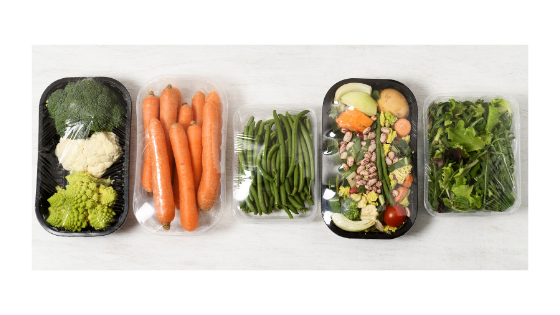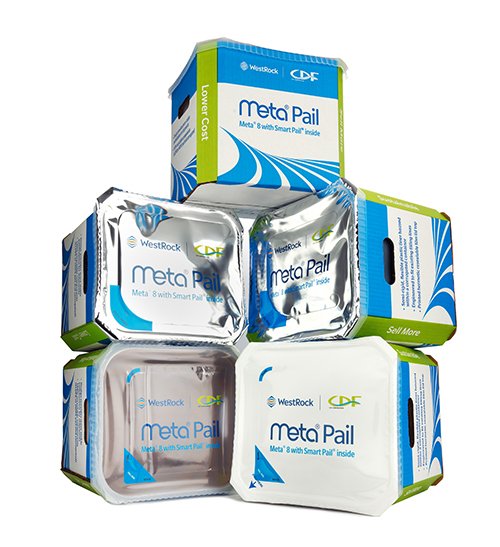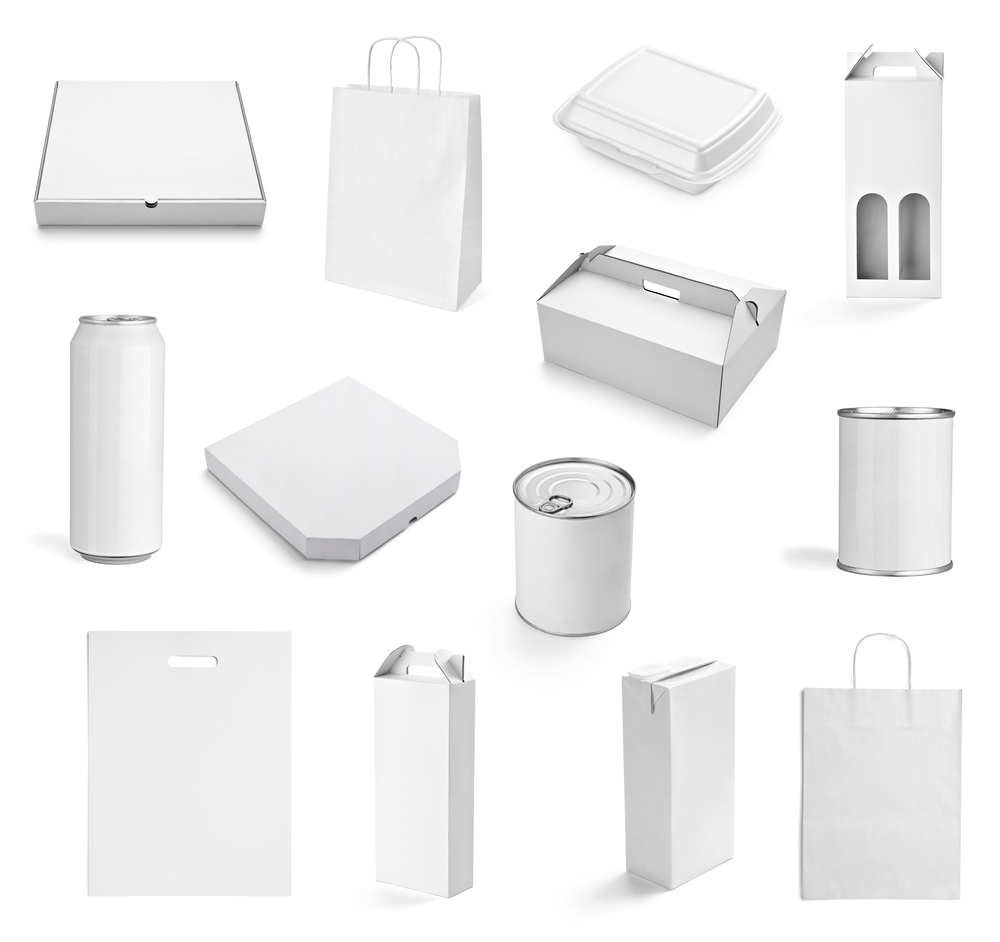Flexible packaging, by and large, is not recyclable. While there’s an accelerated effort to ensure the future of flexible is recyclable and more sustainable, as of now this is largely true. Flexible packaging recyclability is not nearly as widespread as paper and corrugated board, as it’s mostly confined to select store drop-off locations for applicable packaging. However, what is not taken into consideration are the front end sustainability benefits of flexible packaging. Yet, there’s another key benefit of this packaging format that doesn’t get nearly enough attention — and that’s how flexible packaging helps reduce food waste.

Food Waste: A Global Problem
According to a study by the Flexible Packaging Association (FPA), nearly 40 percent — or 34.7 million tons — of all produced food is sent to landfill each year. This isn’t just a waste of food and money, but it also wreaks havoc on the environment. Per the study, food waste generates about 27 million tons of carbon dioxide equivalent, a climate change-causing greenhouse gas, and that’s just the direct impact of food waste.
There are several indirect effects of food waste as well, such as the waste of natural resources used in creating the foods. For instance, food production requires land and water. There are greenhouse gases from cattle production, farm machinery and trucks that deliver food, water pollution from fisheries and nutrient runoff from fertilization. These are all necessary to produce food, but when that food that is produced is wasted, it creates a detrimental “double-dip” of sorts as these efforts go to waste.
So what foods are the most discarded in America? Fruits, vegetables and dairy products top the list, with a combined 69 billion pounds of product discarded each year. Grain products, meat/poultry/fish, and sugars and sweeteners are also highly wasted food categories. The three main reasons for food waste are food spoilage, too much food being prepared and personal preference. While flexible packaging can’t do much about personal preferences and fussy eaters, it’s a huge ally in extending freshness and helping with proper preparedness. We’ll get into that in the next section.
Flexible Packaging’s Role in Reduced Food Waste
As we noted in the above section, flexible packaging has the potential to reduce food waste by extending food freshness and shelf life, and helping families to better control portions. Here’s a closer look at how this is accomplished:
 Shelf life extension: Advanced packaging technologies like Modified Atmospheric Packaging (MAP), vacuum packaging and active packaging don’t just use less packaging material than conventional formats, but they can also extend freshness and shelf life, and reduce food spoilage. MAP packaging, specifically, alters the content inside the packaging to a 20 percent oxygen and 80 percent nitrogen concentration, which slows the decay of the food product it is packaging. Vacuum packaging removes air from the package to prevent organism growth and delay spoilage, notably in dry foods. Active packaging is a growing format that integrates certain components into the packaging environment that either release or absorb defined substances to extend shelf life. With these technologies, meat products can extend shelf life from three to 20 days, certain fruits from seven to 70 days and veggies from days to weeks.
Shelf life extension: Advanced packaging technologies like Modified Atmospheric Packaging (MAP), vacuum packaging and active packaging don’t just use less packaging material than conventional formats, but they can also extend freshness and shelf life, and reduce food spoilage. MAP packaging, specifically, alters the content inside the packaging to a 20 percent oxygen and 80 percent nitrogen concentration, which slows the decay of the food product it is packaging. Vacuum packaging removes air from the package to prevent organism growth and delay spoilage, notably in dry foods. Active packaging is a growing format that integrates certain components into the packaging environment that either release or absorb defined substances to extend shelf life. With these technologies, meat products can extend shelf life from three to 20 days, certain fruits from seven to 70 days and veggies from days to weeks.- Proper preparedness: Thanks to advanced fitments and closures that are able to integrate with flexible bags and pouches, consumers are better able to portion when preparing food. These accessories allow consumers to prepare only what’s necessary — and not the entire packaged contents like traditional formats — and save what’s left for another meal. These fitments and closures also allow consumers to keep freshness locked into the package between meal preparation. Furthermore, flexible formats like stick packs and single-serve packaging allow consumers to practice better portion control, all of which helps reduce food waste via over serving.
Doing the Work
Creating sustainable, Mindful Packaging also includes a company’s ability to provide future and continued success with its products. That involves looking ahead and planning for the next generation of packaging within a given sector. That’s exactly what we did in the B2B sector when we disrupted the plastic pail packaging market with Meta® Pail. This innovative, award-winning flexible packaging solution is a semi-rigid, vacuum-formed, plastic pail insert with a hermetically sealed laminated film lid, housed within an 8-sided corrugated Meta container. Meta Pail transports semi-viscous, solid, and most liquid products currently shipped in plastic pails.
While its use extends far beyond food and beverage purposes, it’s perfectly suited for the many products in the F&B industry:
Solids and dry goods: croutons, diced fruit, frozen fruit, spices, pet food
Semi-Viscous: sauces, dressings, condiments (mayonnaise, pickles, relish), bakery goods (flavorings, fillings, frosting, toppings, puree, compote), and more
Liquids: dairy (yogurt, cheese, ice cream, sweetened condensed milk), dyes, pigments, and more

Sustainability: Saving the Environment and Your Bottom Line
Everyone wins when we work collectively toward sustainability goals. When we all pitch in through simple practices and everyday business decisions, we all get there. Meta Pail is just one of CDF’s Mindful Packaging solutions that helps you meet your sustainability initiatives, for your business and the planet. Here are some sustainable packaging statistics about Meta Pail:
- Less disposal volume, easier to recycle: 4 collapsed Smart Pails fit into the space of
1 five-gallon plastic pail - Reduced impact on climate change (CO2 emissions) by 52% over rigid pails
- 72% less solid waste than rigid pails
- 64% less energy usage than rigid pails**
- Recyclable components: HDPE pail and corrugated container
- Ability to collapse or nest for minimized and efficient disposal/recycling—takes up less space in a truck, plant, or dumpster
There’s so much more to discuss about Meta Pail, and this page provides a comprehensive view of this innovative, sustainable packaging solution.
Mindful Packaging
Mindful Packaging is more than a simple concept at CDF. It’s at the heart of our mindset. All our packaging innovations are engineered through this filter, keeping all stakeholders—literally—in mind. Not the least of which is the planet and everyday people, whether or not they ever directly use our industrial packaging products. We take our responsibility to the greater ecosystem seriously and understand that the ripple effects of our actions, large or small, ultimately impact each one of us. And we mind what we do so you don’t have to.
What’s on your mind today; how can we help you meet your flexible, sustainable packaging needs? Contact us now to begin the conversation.
 Shelf life extension: Advanced packaging technologies like Modified Atmospheric Packaging (MAP), vacuum packaging and active packaging don’t just use less packaging material than conventional formats, but they can also extend freshness and shelf life, and reduce food spoilage. MAP packaging, specifically, alters the content inside the packaging to a 20 percent oxygen and 80 percent nitrogen concentration, which slows the decay of the food product it is packaging. Vacuum packaging removes air from the package to prevent organism growth and delay spoilage, notably in dry foods. Active packaging is a growing format that integrates certain components into the packaging environment that either release or absorb defined substances to extend shelf life. With these technologies, meat products can extend shelf life from three to 20 days, certain fruits from seven to 70 days and veggies from days to weeks.
Shelf life extension: Advanced packaging technologies like Modified Atmospheric Packaging (MAP), vacuum packaging and active packaging don’t just use less packaging material than conventional formats, but they can also extend freshness and shelf life, and reduce food spoilage. MAP packaging, specifically, alters the content inside the packaging to a 20 percent oxygen and 80 percent nitrogen concentration, which slows the decay of the food product it is packaging. Vacuum packaging removes air from the package to prevent organism growth and delay spoilage, notably in dry foods. Active packaging is a growing format that integrates certain components into the packaging environment that either release or absorb defined substances to extend shelf life. With these technologies, meat products can extend shelf life from three to 20 days, certain fruits from seven to 70 days and veggies from days to weeks.